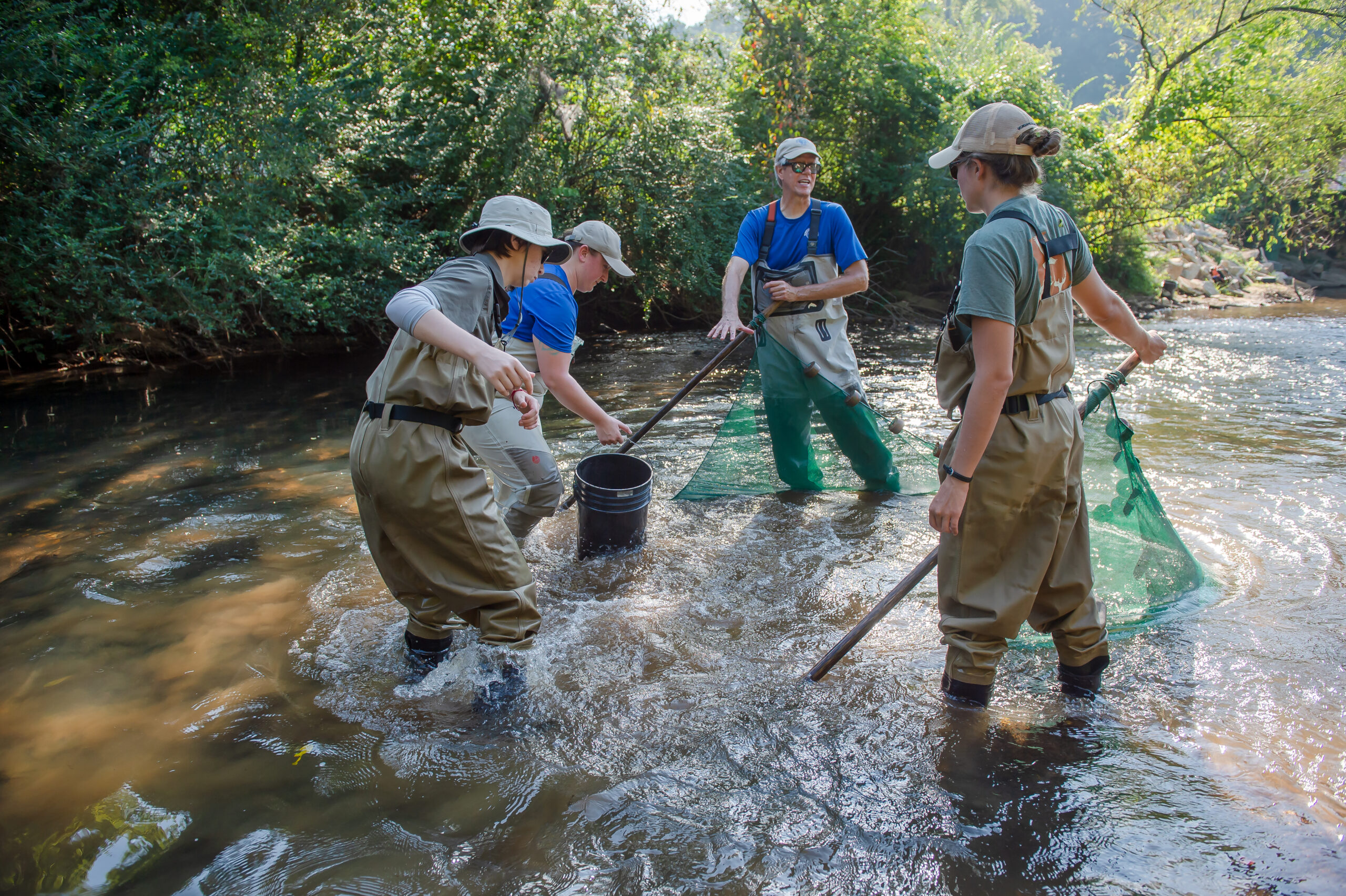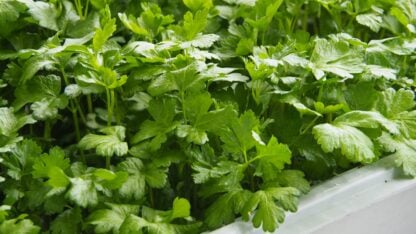As the summer temperatures drag on, let’s take a break to visit a nice, cold North Georgia river.
The Ellijay River flows from the Blue Ridge Mountains into Ellijay. One day last week, Bernie Kuhajda from the Tennessee Aquarium Conservation Institute was in the river, just down the street from the elementary school and city hall.
“I play with fish,” Kuhajda, who’s an aquatic conservation biologist, said. “That’s my title. I’m the fish-playing-with-guy.”
The water was cool. Trees and late summer wildflowers lined the banks.
“This is a pretty healthy looking stream right here,” Kuhajda said.
And that’s good for him, because he was there with other researchers from the Tennessee Aquarium and the state of Georgia to look for a rare fish that needs that healthy habitat to live in.
So this story isn’t just an excuse to take a dip in stream. It’s also about Georgia’s incredible biodiversity; there are more different kinds of freshwater fish here than almost any other state in the nation. (Only Alabama and Tennessee have more.)
“It’s a pretty special area to get to work in,” said Ani Popp, Coosa River aquatic diversity biologist for the Georgia Department of Natural Resources.
The Southeast is a hotspot for aquatic diversity. Not only fish, but also mussels and crayfish. The rivers here have more species than the rivers out West. And some of those species are limited to just a handful of locations.
That includes the fish Kuhajda and Popp were after: the federally threatened goldline darter, “found in two river systems in the entire world,” Kuhajda said.
It’s in the Cahaba River in Central Alabama, and in North Georgia it’s in the Ellijay River, Cartecay River, Mountaintown Creek – all tributaries of the Coosawattee River – and in the Coosawattee itself about Carters Lake.
Scientists think the goldline darter used to be much more widespread, “but it just disappeared with the construction of dams over the last 100 years or so,” Kuhajda said.
So he and Popp and a few other researchers were in waders in the water to check on how goldline darters are doing.
As the two of them held up one end of a net, a couple others kicked through the water to shoo fish toward them – a technique they’ve dubbed with a dance name.
“We call this the darter shuffle,” Kuhajda said. “It’s sweeping the clubs all over the country. All the kids are doing it.”
After a few tries, pulling up plenty of other kinds of fish, a goldline darter turned up.
“Ta da!” shouts Popp.
The fish is about 2 and a half inches long, small and sleek with a dark splotchy line, and some tannish-gold coloring. A couple others emerged in later darter shuffle maneuvers that morning.
Aside from being rare, Popp said the fish is also a good indicator species.
“It’s a sign that our waterways are healthy, or at least not totally shot yet,” she said.
There aren’t final results yet from this summer’s surveys, but Kuhajda said the threats to goldline darters now are things that affect clean water, like urbanization and farming or logging practices that result in runoff or damage to a stream’s buffer of plants.








